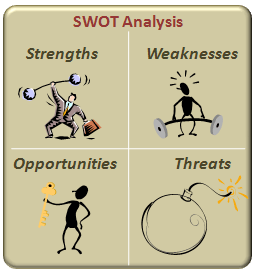
I will admit that at first I was very indifferent about the Blog Project. The first day of lab I was stressing out about the entire assignment complaining that is was time consuming, difficult to understand and pointless. I can say that my views have certainly changed since then and really enjoyed doing the writing assignments. I think the blog was perfect for someone like me because I tend to be a perfectionist and knowing that anyone could look at my page really challenged me to do my best when writing the posts. I also thought it was very beneficial skill to learn how to use a blog and the different challenges that came with it. Overall, I hope that everyone enjoyed the Blog assignment and appreciates the lessons learned from creating your own blog. I hope all who read my blog posts are pleased and have fun looking at the pictures and YouTube videos!
Strengths:
-Well organized and easy to read
– Good color scheme and background
– meets rubric requirements
– Displays entertaining pictures and video clips
– engages other classmates comments
– Thoughtful blog posts
Weakness:
– Posts maybe too long which may cause bloggers to not take the time to read them
– Bloggers may find the blog theme to be boring
Opportunities:
– engaging more in other peoples blogs which in return will increase the traffic on my page
Threats:
– Someone hacking into my blog
– Other bloggers (competition)
AutoCAD was one of the first Computer Aided Design programs to be made available on personal computers. It was released in 1982 by Autodesk, Inc., and offered a personal solution to software that was before then released only for larger workstations. According to Wisegeek.com “CAD programs prior to AutoCAD required massive amounts of computing power in the form of gigantic computers, AutoCAD streamlined its operating and optimized it for the IBM PC, allowing people to work from home or on their own work computers”. After further researching and watching AutoCAD tutorials, I wish that I could have been in class to learn the program. 
There are many strengths and efficient tools built into the program that help people design buildings, products, or public spaces, without having to draw up plans by hand. One tool that I researched was the palettes. According to the article The Best of AutoCAD, “Most users don’t take the time or get the proper training to understand the power of palettes. But those who learn and apply palettes become more productive. One function of the palettes is to make easy customization without programming. “Palettes are also a great way to regain some of the screen real estate. Unlike toolbars, they can be docked, float, automatically hide and even be made transparent.” Tool Palette, tools, can also be organized or grouped into tabs which avoid multiple toolbars or pull-down. Tool palettes can ensure accuracy and can reduce rework due to items being drawn with the wrong color, layer, line type, scale or style. Over all, tool palettes will make you more productive because you will now use fewer clicks and picks. Reducing repetitive steps, clicks and picks is how you become more productive working with AutoCAD.
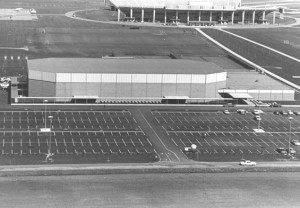 The Bowling Green Ice Arena was built in 1967, and contains a 5,000-seat hockey rink, a curling rink, a figure skating studio, a skate shop and Center Ice Club. The overall presentation of the ice arena appears to be old and outdated. In interior is also out dated but changes and updates have been made. According to Sawyer chapter 8, projected use of facility and recommendations, the floor of the ice arena does seem to be efficient. There are various areas in the facility, such as the front entrance, where skaters can access without having to remove their skates. Although there are not areas like this everywhere throughout the facility I feel that this is something they arena could improve on. By adding additional areas where skaters do not have to their skates such as, bathrooms and lock rooms, will make the building more efficient and manageable for users.
The Bowling Green Ice Arena was built in 1967, and contains a 5,000-seat hockey rink, a curling rink, a figure skating studio, a skate shop and Center Ice Club. The overall presentation of the ice arena appears to be old and outdated. In interior is also out dated but changes and updates have been made. According to Sawyer chapter 8, projected use of facility and recommendations, the floor of the ice arena does seem to be efficient. There are various areas in the facility, such as the front entrance, where skaters can access without having to remove their skates. Although there are not areas like this everywhere throughout the facility I feel that this is something they arena could improve on. By adding additional areas where skaters do not have to their skates such as, bathrooms and lock rooms, will make the building more efficient and manageable for users.
Overall I believe that the BGSU Ice Arena can be comparable to the Recreation Center on campus because they are both out of date, but important attractions when recruiting students. According to the Bowling Green website, “Board of Trustees approved construction of the ice arena in order to “improve and advance the health and physical education program on campus. Continuous renovation and expansion of the facilities served to maintain the contemporary nature of the building throughout the decades.” The previous statement shows me that, Bowling Green plans to continue to update and renovate the facility in order to keep up with the times. In my opinion, the ice arena seems to be such an outdated facility that rebuilding should be discussed not updating of the building.
The article I chose to critique was called Impact of College Recreation Centers on Enrollment. This article is unique because the author, Stephen Kampf, is with the Department of Recreation and Wellness at Bowling Green State University. The following article was published in the Recreational Sports Journal recently in 2010. Kampf’s study was broken up in to nine different categories that impact the building of recreation centers and student enrollment. The following categories were fitness and wellness needs, recruitment, funding, enrollment trends, past construction and enrollment, admission personnel discussions, recruitment and a new college recreation center, recruitment and an old recreation center, and limitations. Recreation centers became popular in the late 1970’s and early 80’s were considered an important part of the college campus. Although the centers were becoming popular, there was not nearly as much programs and state of the art facilities being built around the country as there are today. Colleges these days have realized this trend and are creating major funding to provide state-of the art facilities for students and incoming students. The focus of Kampf’s study is the impact student’s benefit from having increased wellness options, greater physical health, mental health, and the impact these facilities have on enrollment.
The article was very in depth and provides a range of information on the given topic. Kampf also provided an analysis based on enrollment numbers and interviews with college admissions personnel to determine if there is a relationship between having a new college recreation center and enrollment. This analysis showed that enrollment did increase when a new facility was built and numbers continued to increase over the years. In the recruitment part of the article, Kampf explains that by building these new recreation centers is a great way to entice future students to enroll. Although most colleges in Kampf’s study did benefit from rebuilding, some universities did not. Because funding these facilities are so expensive it is beneficial to discuss the pro’s and con’s of taking the risk to build. When rebuilding or creating a new building a portion of the funds come from student fees. With that being said, sometimes this can have a reverse affect and drive student enrollment away. Discussing the pro’s and con’s are very important when deciding to build.
Overall Kampf’s article was very informative and beneficial for recreation majors. I did not realize how much of an impact new building or rebuilding such as, recreation centers can impact a college. This explains why colleges take the risk of investing so much money into new building or rebuilding. In the long run it is beneficial for colleges to take risk of spending millions of dollars to build or rebuild because the effects are rewarding.
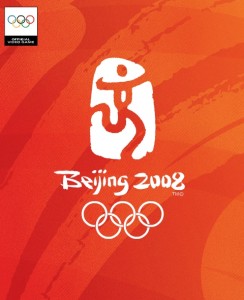
The Olympic reference I researched was about the 2008 Olympics hosted in Beijing. The article was about Beijing’s action plan for preparation for the 2008 Olympic Games. In the article there are numerous example of how the country plans on cautiously spending its money on the Olympics. “The Olympic Games will use thirty-seven venues, thirty-two of which will be in the Beijing area and five in areas outside of Beijing. Of the thirty-two venues in Beijing, nineteen (including six temporary competition venues) will be newly built and thirteen will be refurbished or expanded venues. In addition, fifty-nine training venues must be refurbished, and supplementary construction must be conducted on special Paralympic Game facilities” (16). After reading the following article one can see that there is a lot of construction happening in a city when a hosting the Olympic Games. Most host Olympic cities, if not all, take years to prepare for the Olympic Games because of all the refurbishing and rebuilding of facilities. With all of the construction that goes into the Olympic Games, the question being purposed is Beijing and other host cities benefiting from hosting the Olympic Games? believe that Beijing did benefit from hosting the 2008 summer Olympics but maybe not so much in numbers as opposed to the Legacy is has left for the country. Since my article talked specifically about the different aspects of what is going to need to be built and not the impact of the new building, I needed to find more research to help explain my answer which will be seen in the following text.
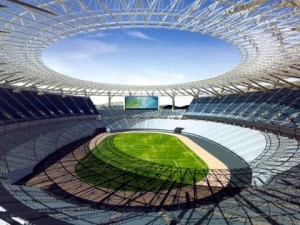 Beijing profiting less in numbers can be supported by economist Jeffery Owen in his article Estimating the Cost and Benefit of Hosting Olympic Games: What Can Beijing Expect from Its 2008 Games. Jeffery explains that, “Mega-events” such as the Olympic Games require large sums of public money to be spent on venues and infrastructure improvements. In order to justify the use of public funds, economic impact studies are often commissioned which invariably project large inflows of money that will have a long-term positive effect on the economy by such means as job creation and visitor spending. Events of the scale of the Olympic Games, which attract large amounts of money from outside a local economy, are forecasted to have economic impacts in the billions of dollars. Ex-post studies, however, have consistently found no evidence of positive economic impacts from mega-sporting events even remotely approaching the estimates in economic impact studies.”(Owen) The macro economic effects of the Olympic will result in higher economic growth and increase in spending related to the Olympics will help to boost Aggregate Demand. However, the increased spending will only represent a relatively small % of GDP. Some estimates suggest around 0.5% of GDP. Also the Chinese economy is already growing very quickly so it is debatable whether a further boost will help. From a macroeconomic point of view, it is not clear how important the Olympics will be. There is a definite increase in AD, but, it remains a relatively small % of total GDP. (Owen)
Beijing profiting less in numbers can be supported by economist Jeffery Owen in his article Estimating the Cost and Benefit of Hosting Olympic Games: What Can Beijing Expect from Its 2008 Games. Jeffery explains that, “Mega-events” such as the Olympic Games require large sums of public money to be spent on venues and infrastructure improvements. In order to justify the use of public funds, economic impact studies are often commissioned which invariably project large inflows of money that will have a long-term positive effect on the economy by such means as job creation and visitor spending. Events of the scale of the Olympic Games, which attract large amounts of money from outside a local economy, are forecasted to have economic impacts in the billions of dollars. Ex-post studies, however, have consistently found no evidence of positive economic impacts from mega-sporting events even remotely approaching the estimates in economic impact studies.”(Owen) The macro economic effects of the Olympic will result in higher economic growth and increase in spending related to the Olympics will help to boost Aggregate Demand. However, the increased spending will only represent a relatively small % of GDP. Some estimates suggest around 0.5% of GDP. Also the Chinese economy is already growing very quickly so it is debatable whether a further boost will help. From a macroeconomic point of view, it is not clear how important the Olympics will be. There is a definite increase in AD, but, it remains a relatively small % of total GDP. (Owen) 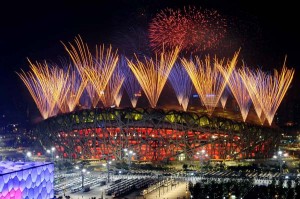 In addition to the standard projections of economic impact, Olympic studies also include longer term benefits sometimes referred to as the “Olympic Legacy”. “These legacy effects, derived from positive publicity from the Games, include increased tourism after the Games, attraction of business, and infrastructure investments that improve the urban environment” (Owen). Legacy impacts are generally not incorporated into the economic impact numbers, but rather offered as an additional, unquantifiable benefit. “The lack of any ex post study that finds improvements in economic growth or living standards due to mega events should cast some suspicion on the legacy effects of Olympics, or at least the ability of such effects to be transformed into real economic benefits to the local economy. Baade and Matheson found the evidence suggests that the economic impact of the Olympics is transitory, onetime changes rather than a ‘steady-state’ change” (Owen).
In addition to the standard projections of economic impact, Olympic studies also include longer term benefits sometimes referred to as the “Olympic Legacy”. “These legacy effects, derived from positive publicity from the Games, include increased tourism after the Games, attraction of business, and infrastructure investments that improve the urban environment” (Owen). Legacy impacts are generally not incorporated into the economic impact numbers, but rather offered as an additional, unquantifiable benefit. “The lack of any ex post study that finds improvements in economic growth or living standards due to mega events should cast some suspicion on the legacy effects of Olympics, or at least the ability of such effects to be transformed into real economic benefits to the local economy. Baade and Matheson found the evidence suggests that the economic impact of the Olympics is transitory, onetime changes rather than a ‘steady-state’ change” (Owen).
It has also been argued that the Olympic Games can advance a city in the hierarchy of “world cities.” According to Jeffery Owen, “some of the most important global spectacles are sports mega events such as the Olympics which reach a worldwide television audience and offer perhaps the best stage upon which a city can make the claim to global status.” The world cities concept is closely related to the Olympic legacy, especially regarding tourism, which is seen as a modern arena of economic competition among cities. “During this latest phase of globalization, when tourist attractions are highly prized, many cities are repackaging the old with new accommodations or accessibilities to re-present themselves as living history and to take advantage of the global tourism economy” (Owen). It is easy to see how a city such as Beijing would find the Olympics appealing in this context.
In comparison to Beijing, Greece also felt the economic and Legacy effect of the Olympic Games. According to Simon Nixon writer for MoneyWeek,”the impact of the Olympics on the Greek economy has been mostly beneficial. Over the last few years, the combination of Olympic spending and generous EU handouts have helped to transform the country from an economic basket case into one of the fastest-growing economies in the EU, with growth of 4%. But the legacy of the Games is public-sector debt likely to hit 100% of GDP this year and a budget deficit forecast to reach 4%, well beyond the euro zone 3% limit. As a result, Greece has been told to cut its debt –this at a time when the supply of EU funds is about to dry up following EU enlargement.”Overall there have only been a few cities that have profited from the Olympics Games such as Los Angeles, Atlanta, South Korea, Sydney, and Barcelona which marked the start of an economic and cultural renaissance for the Catalan capital. Although not many have made profits from the Olympics, many cities have reaped a Legacy effect that will carry out through many years in their countries.
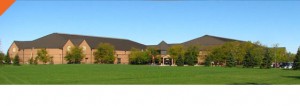 On October 26, 2010 our class had a chance to get a tour of the Perry Field House. Given the expanding number of intercollegiate teams and the increasing popularity of intramural and club sports at the University; the university administrators approved plans for the construction of a brand new facility specifically for use by those groups. The Perry Field House was built in 1993 and is an $8.7 million facility. The 127,000 sq. ft. has two large wings which include the turf room and they track room. The turf room is a 100 x 60 yard field covered with synthetic turf including four batting cages and the track room is a 200-meter track encircling four courts for basketball, volleyball, or tennis. The Perry Field House includes administrative, intramural, sport clubs offices, locker rooms, and meeting rooms. The Perry Field House is primarily a “scheduled use” recreational facility for physical education classes, intercollegiate athletics, intramural games, sport clubs and special events, but drop-in activities (basketball, volleyball, flag football, soccer, etc.) are encouraged when space allows. (bgsu.edu)
On October 26, 2010 our class had a chance to get a tour of the Perry Field House. Given the expanding number of intercollegiate teams and the increasing popularity of intramural and club sports at the University; the university administrators approved plans for the construction of a brand new facility specifically for use by those groups. The Perry Field House was built in 1993 and is an $8.7 million facility. The 127,000 sq. ft. has two large wings which include the turf room and they track room. The turf room is a 100 x 60 yard field covered with synthetic turf including four batting cages and the track room is a 200-meter track encircling four courts for basketball, volleyball, or tennis. The Perry Field House includes administrative, intramural, sport clubs offices, locker rooms, and meeting rooms. The Perry Field House is primarily a “scheduled use” recreational facility for physical education classes, intercollegiate athletics, intramural games, sport clubs and special events, but drop-in activities (basketball, volleyball, flag football, soccer, etc.) are encouraged when space allows. (bgsu.edu)
Two areas where the Field House meets standards from the book would include the multipurpose facility arena and the merging concept. The Field House did a good just at merging the two facility areas by maximization and minimization. “When constructing the site, the director of the project must maximize they use of the space with a clean organization of facility components and also must maximize the aesthetic of the facility” (Sawyer 307). Merging the facility maximizes its use and can be used for variety of events. The track and field room is able to convert into basketball courts, volleyball courts, tennis courts, a banquet hall, an expo center, and more. The football room can house flag football games, football practice, soccer games, intramural games, and more. “The project director must also minimize safety concerns and liability. Through each stage of the facility planning, keeping these concepts in mind will prevent mistakes in the plan and eventual construction” (Sawyer 307). The Field House maximized the use of the space in the facility very efficently. The facility also minimized safety concerns with signs and supervision.
Although the Field House does meet previous standards, there are some suggestions from the book where the Field House does not meet standard. One example of this “does not meet standard” concept was expressed by Scott our tour guide. He explained that the flooring on the track is a poured/concrete surface that is getting worn-out on the inside of the track where most of races take place. In order for repair the Field House would have to pull up the entire floor and re-pour it which would be very costly. Another example Scott expressed is the acoustics in the track and field room which did not meet standard. As Scott was giving the tour one could already tell what he meant by the acoustics not meeting standard. As Scott was trying to speak to the class it was hard to hear him. One reason this occurred was because the lighting was very loud, creating loud humming noises, which caused his voice to be drowned out. Chapter 10 expresses why this does not meet standard by stating that “For non-glass court surfaces, acoustical treatment is important within the surfaces. Insulation in the walls and ceiling will help to buffer sound within a court and also between courts” (Sawyer 155). The lack of insulation is what could have caused this echoing and hard hearing during our tour. Over all the Perry Field House is a valuable addition to Bowling Green State University and is utilized by a high percentage of the student body.
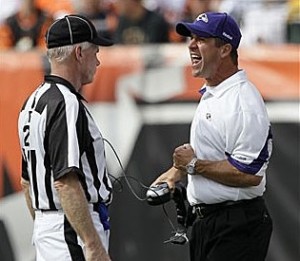 On Friday November 6, 2010 Bob Waggoner visited the Perry Field House to discuss his experience officiating in the NFL. In the beginning of the presentation Waggoner spoke briefly about his career background and how he ended officiating in the NFL. Waggoner’s first career was a probation officer then moved into high school officiating, which lead him to college BSC conference, and now into the NFL. Waggoner explained his experience working in the NFL as a “humbling and challenging” career/experience. As he expressed some of the job requirements, one was able to understand by what he meant when saying the job was humbling and challenging. “Try working in a career where every time you work you are being video recorded then at the end of your shift your boss critiques your work day.” Waggoner went through the aspects of how officials are judged in their career which humbles and challenges the officials. It seems to me that the officials are just doing their job yet their job is the dirty work which no one likes. For example Waggoner explained that they get a lot of crap put on their shoulders from the coaches, players, fans, and then their bosses. Waggoner also explained how the NFL officials are graded and measured when being critiqued. Officials are graded on how well they call a play and are measured by the 1.4% of their play calling, not the 9.8%. In other words, officials are not getting looked at what they called right but what they missed and called wrong. He noted that on average there are only 3 mistakes called during a game which does not give room for many mistakes. Not only are they graded at how they call the plays but the officials are also measured on how they interact with the players, coaches, and other officials. This officiating stuff does not seem as easy as it looks having to make the right calls and pleasing every one yet being fair I thought to myself.
On Friday November 6, 2010 Bob Waggoner visited the Perry Field House to discuss his experience officiating in the NFL. In the beginning of the presentation Waggoner spoke briefly about his career background and how he ended officiating in the NFL. Waggoner’s first career was a probation officer then moved into high school officiating, which lead him to college BSC conference, and now into the NFL. Waggoner explained his experience working in the NFL as a “humbling and challenging” career/experience. As he expressed some of the job requirements, one was able to understand by what he meant when saying the job was humbling and challenging. “Try working in a career where every time you work you are being video recorded then at the end of your shift your boss critiques your work day.” Waggoner went through the aspects of how officials are judged in their career which humbles and challenges the officials. It seems to me that the officials are just doing their job yet their job is the dirty work which no one likes. For example Waggoner explained that they get a lot of crap put on their shoulders from the coaches, players, fans, and then their bosses. Waggoner also explained how the NFL officials are graded and measured when being critiqued. Officials are graded on how well they call a play and are measured by the 1.4% of their play calling, not the 9.8%. In other words, officials are not getting looked at what they called right but what they missed and called wrong. He noted that on average there are only 3 mistakes called during a game which does not give room for many mistakes. Not only are they graded at how they call the plays but the officials are also measured on how they interact with the players, coaches, and other officials. This officiating stuff does not seem as easy as it looks having to make the right calls and pleasing every one yet being fair I thought to myself.
Another aspect I did not realized in the life of an official is that they have just as busy schedules as coaches and players. Officials work week days in the office and travel for games on the weekend. So they are pretty much working 24/7. Waggoner mentioned that one game caused him to miss his daughter’s high school graduation. Not only is officiating a hard job, but they are defiantly held to a high standard from but Waggoner briefly spoke on. He said some additional comments that officials are required to meet are one a year background checks, physicals, stress test, and psychological tests. Overall I enjoyed having Bob Waggoner come speak at the Perry Field House. After his presentation I certainly left that day having a greater respect for officials and what they are required to do to even be on the field. I think that officiating may be one of the highest standard jobs out there because everyone is watching you while working so there is not room for slacking.
 “Technological advances in the past few decades have greatly increased the competitive nature of the economic business world. Companies have used software, computers and the Internet to transform their businesses from local places of business to national and global market competitors. Technology has also forced businesses to remain flexible, adapting their operations to newer and better technological advances” (Vietz). Many people around the world may argue that there are numerous benefits as well as disadvantages to the advancement of technology. Some benefits of technology stated in Leigh Gossel’s article “Pros and cons of the Internet in today’s society” are, that we are globally connected, convenience, ease of communication, rapid retrieval of information, Autonomy and Empowerment, efficiency, and access. Wow, when looking at it there are many good things that have come from technology but some would beg to differ. I know a few people such as my grandparents and one particular man in my CS 1000 class would say that technology has just made things more complicated. For example the man in my CS 1000 class is having a hard time with just the basic software’s such as Word. He complains that it is harder for him to do his job because they are now implementing technology in their work field which as caused him to come back to College to further his education. One common con to the recent advances in technology are, not everyone is technologically up to date. Some other cons found in Gossel’s article are, erosion of privacy, complacency/judgment, new category of crimes, sedentary lifestyle, and the simple fact that we are becoming dependent on technology. Depending on who you are speaking with, technology does seem to have a never ending list of pros and con’s. In my opinion, I think technology has brought some good changes in the field of tourism, leisure, and event planning.
“Technological advances in the past few decades have greatly increased the competitive nature of the economic business world. Companies have used software, computers and the Internet to transform their businesses from local places of business to national and global market competitors. Technology has also forced businesses to remain flexible, adapting their operations to newer and better technological advances” (Vietz). Many people around the world may argue that there are numerous benefits as well as disadvantages to the advancement of technology. Some benefits of technology stated in Leigh Gossel’s article “Pros and cons of the Internet in today’s society” are, that we are globally connected, convenience, ease of communication, rapid retrieval of information, Autonomy and Empowerment, efficiency, and access. Wow, when looking at it there are many good things that have come from technology but some would beg to differ. I know a few people such as my grandparents and one particular man in my CS 1000 class would say that technology has just made things more complicated. For example the man in my CS 1000 class is having a hard time with just the basic software’s such as Word. He complains that it is harder for him to do his job because they are now implementing technology in their work field which as caused him to come back to College to further his education. One common con to the recent advances in technology are, not everyone is technologically up to date. Some other cons found in Gossel’s article are, erosion of privacy, complacency/judgment, new category of crimes, sedentary lifestyle, and the simple fact that we are becoming dependent on technology. Depending on who you are speaking with, technology does seem to have a never ending list of pros and con’s. In my opinion, I think technology has brought some good changes in the field of tourism, leisure, and event planning.
Some of the beneficial advances that technology has brought to the tourism, leisure, and event planning field are the different kinds of event planning software programs. There are few programs that I found on the Business.com website which give a brief description of the different programs.
DW Event by DW Alliance
Fully hosted event management and registration software-highly customizable, advanced features for an unbeatable price. Includes custom event websites and branding, multiple registration types, advanced attendee, sponsor and exhibitor management, association/membership management, email marketing and website publishing/content management, automated billing and more. We differentiate ourselves from the competition by our personalized, flexible attention to each particular client case.
NEON Web Based CRM by Z2 Systems
Are you a Nonprofit or Membership organization? Then our web-based NEON CRM was built for you. We have complete event builder & registration integration with our Membership Management and/or Fundraising software. Our full relational CRM database can be accessed from any internet connection, connects to your web site, offers a donor login, and much more. Through NEON you can create & manage events, send emails, run reports, process payments, accept coupon codes & discounts, and much more.
Eventbrite by Eventbrite
Offers an online event registration tool allowing you to publish, promote and sell tickets to your events online. Eventbrite helps businesses & organizations of all sizes manage, promote and sell-out their events. Eventbrite is perfect for conferences, seminars, reunions, performances and more.
Ungerboeck Software by Ungerboeck Systems International
Ungerboeck is the world leader in end-to-end venue management software for convention & exhibition centers, stadia, arenas and theaters. For most organizations, Ungerboeck software delivers the capabilities of three to five separate software packages at a fraction of the cost including CRM, booking, event management, operations and more. Available in 6 languages, Ungerboeck software drives increased revenue and decreases costs for over 30,000 event professionals in 35 countries.
As a student going into the career field which these programs relate to, I find that there are many positive advantages to come from these software programs. One advantage of the software programs is the accessible tools provided for marketing. Over the summer I interned with event planning company and quickly learned that marketing is prevalent in the day to day duties of an event planner. Marketing can be very challenging without having the proper skills and knowledge. The DW Event program would have been help having this program available to me. This program includes custom event websites and branding, multiple registration types, advanced attendee, sponsor and exhibitor management, association/membership management, email marketing and website publishing/content management, and automated billing. Another advantage to these programs are the organizational tools it provides. Event planning can be quite hectic while trying to coordinate different events with in the same week, month or year. By having a program to regulate and organize these hectic schedules it can take a work load off of an event planner so they can use their time doing other related things for the upcoming events.
The one disadvantage I found using these specific programs is some people are not as technology advanced as others. I have not had a chance to actually come in contact with these programs but other people may find them difficult to use if they do not feel comfortable using computers. Another disadvantage I found is that event planners may become too reliable on these certain programs making their job easier. There is nothing wrong with simplifying things but event planners may become so dependent on them that they cannot function without them. Lastly, computers do make event planning easier by storing and organizing information but technology is not always reliable. Computers freeze, crash, delete programs and basically not are not as reliable as humans. I find that there needs to be a balancing with technology in the work force.
 1.Do you feel an entity or individual demonstrated negligence in the facts presented in either the Popke or Steinbach article? Justify your answer by using the definition and the requirements of negligence as presented in class.
1.Do you feel an entity or individual demonstrated negligence in the facts presented in either the Popke or Steinbach article? Justify your answer by using the definition and the requirements of negligence as presented in class.
“Negligence is an unintentional tort that injures an individual in person, property or reputation” (Tlep notes). In Paul Steinbach’s article he explains the numerous injuries and fatalities that occur each year in track in field events around the country. According to Steinbach “The staging of field events, with their emphasis on the hurling of heavy implements and human bodies, poses risk management challenges unlike those in any other sport”(Steinbach 39). After reading the article one can see that many of these injure and fatalities are obviously unintentional but perhaps they could have been prevented? One of the greater track and field injures that have been accounted for throughout the nation is pole vaulting. Steinbach states that, “the deaths of three vaulters within a two-month span that year led to the adoption in 2003 of sweeping rules changes at the high school and collegiate levels regarding the sizing of the landing systems and the padding of all the hard perimeter surfaces” (Steinbach40).
I believe that an entity or individual demonstrated negligence in the facts stated from Steinbach’s article. I find it amazing that with all of the injuries and fatalities it wasn’t until an individual died or was injured on the pole vault event that change started being made. As stated before, the sizing of the landing systems and the padding of all the hard perimeter surfaces were all changes that were made in 2003 for pole vaulting events. Had there been risk management steps taken into action before these events, injures could have been prevented.
2. What role do you think the facility itself plays in this case and how can risk management and the prevention of negligence be included in the facility or area design process? Include at least two examples from the text to support your answers. (Chapters 2 or 7).
According to page 97 in our class book, “Signs are an essential part of a facility and should be an integral part of the planning process in a new facility.” The placement, size, shape, color, and graphics are all key elements when designing an efficient sign. In the article one can notice that these are aspects of risk management that are missing. When hosting any kind of event, signs directing people to safe viewing locations are one way to reduce risk. There should also be signs to warn spectators of possible flying objects, caution zones, clearly marked emergency exit signs, and directional signs to improve the flow of traffic. Steinbach’s supports this suggestion by stating in his article, “One final piece of equipment to consider: the warning sign. ‘To reduce the risk of serious injury: STAY ALERT! FLYING OBJECTS!’ reads one sign currently available for purchase.”The more sporting events or other possible risk event put this into action there would be a less risk for people.
On top of signs directing traffic flow, it is important to have someone supervising the facility area. Our book talks about two reasons why it is a great advantage to design a facility that can be supervised. “A lack of proper supervision is one of the most common allegations made in lawsuits regarding negligence in sport and physical activity programs. The design and layout of the facility are often overlooked as a primary reason for poor supervision. Some facilities are inherently easy to supervise and some are not” (Sawyer25). Perhaps in order to prevent injuries and fatalities sporting events such as track and field could have tighter supervision on the premises and consider constructing the area much better to help the supervision process. “Design features that enhance efficiency of supervision include activity areas that are close together and easily monitored. Instead of spreading activity areas around the perimeter of the facility, one efficient method being used is to design along central hallway or mall off of which are place the activity areas” (Sawyer25). By designing an area where it would be more accessible and visible to supervise would put spectators at less of risk.
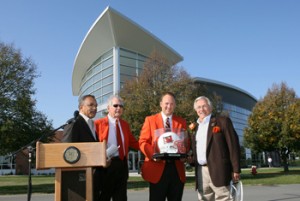 “It’s a terrific addition to the Bowling Green campus, and its impact on our student-athletes is going to be tremendous,” said Christopher. “This is a building that will help all 425 student-athletes and 18 teams.”
“It’s a terrific addition to the Bowling Green campus, and its impact on our student-athletes is going to be tremendous,” said Christopher. “This is a building that will help all 425 student-athletes and 18 teams.”
On Thursday September 14, our class visited the Sebo Athletic Center located north east of campus. “The Sebo Athletic Center provides expanded facilities for both, along with meeting and office space for BGSU athletics”(bgsu.edu). The 42,500-square-foot center is named for retired businessman Robert Sebo, the 1958 BGSU who gave the lead gift of $3.5 million for its construction. There are many different aspects of the facility but according to Greg Christopher, “the first-floor strength and conditioning room and sports medicine facilities are the two key areas in the building.” At about 9,400 square feet, the strength and conditioning room is nearly double the size of what has been the main training area, on the stadium’s west side. Among the room’s features are a floor made of recycled rubber tires and roughly $150,000 worth of weight equipment.
A men’s and a women’s locker room are also on the first floor of the three-story building, whose corridor connects it with the home football locker room and offices on the east side of the stadium. The Sebo Center is not just for football it is also open to all the other 18 sport teams at Bowling Green State University. Even though the Sebo Center is connected to the football field, all the sports teams use the weight room and the rehabilitation room. In the treatment and rehabilitation spaces include a hydrotherapy room with hot and cold tubs and an underwater treadmill in a whirlpool with resistant jets.
On the second floor of the Sebo Center one can find conference rooms and the athletic administrative offices. According to our tour guide, he stated that, “if I could have constructed the building, I would have connected the administrative offices and football offices more closely together.” Although this may not be a recommendation talked about in class, I believe that it does have an effect of the overall effectiveness of the building. The tour guide mentioned that it is a hassle to have to walk down the stairs, across the hall just to get to the administrative building and could have been prevented by connecting or putting the offices all on one floor.
Another aspect of the building management felt could work better if constructed differently was; a stair way for football players from the film room to locker room and easier access to the suits. This related to the discussions we had in class about how new facility trends are always evolving and never as fully up to date as they would like with the constant improvements. Some current trends about the Sebo Center that I found interesting were the magnetic strips on the keys. These keys can allow access to certain rooms for certain people can be turned off at anytime through technology. The tour guide had said this is a big step in technology for them because it is not only easier, but safer too.
Although the Sebo Athletic Center does meet the needs of the athletic teams at BGSU but when comparing the Sebo to a professional team’s training/team locker facility, BGSU’s cannot compare. The Cleveland Browns Training and Administrative Complex is located in Berea, Ohio, on 13 acres of land. The building, which originally opened in August 1991, was renovated in the spring of 1999, while further renovations and expansion commenced during the 2009 offseason. The most recent improvements include an expanded locker room, a lobby restoration that pays tribute to Browns’ Hall of Famers and a complete renovation of the cafeteria, video room, and meet- ing rooms, including a new 2,300 sq. ft. auditorium featuring 120 theater seats. Existing features in the state-of-the-art facility include a field house of 60,000 sq. ft. with a 70-yard field, a 3,100 sq. ft. athletic training room and a restaurant-style kitchen for meal preparation. The complex also hosts three regulation-size natural grass practice fields ideal for year-round football operations, including the team’s training camps.
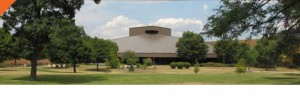
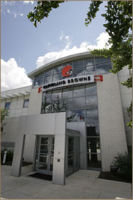
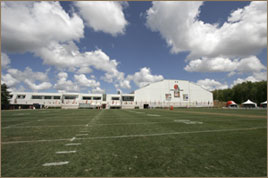
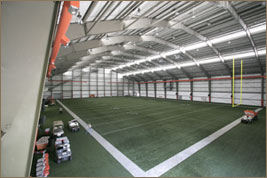
Recent Comments